
Floods in Aden (Archive)
آخر تحديث في: 02-11-2023 الساعة 7 مساءً بتوقيت عدن
Yemen ranks second out of 116 countries in terms of food insecurity. As of March last year, approximately 17 million people - roughly 60% of the population - were facing hunger, food insecurity, and malnutrition.
Bassam Al-Qadi (HJF)
"I used to live with my small family in a small house inside our farm, where we raised sheep, our only source of livelihood. Suddenly, we lost everything due to floods and torrents," says thirty-year-old Wadi’ Al-Tahami.
After losing everything due to flooding, Al-Tahami fled from Al-Hajjah Governorate in North Yemen to one of the camps in the Al-Sha'ab neighborhood in the Al-Bureiqa district, west of the city of Aden, in South Yemen. He adds, “Here, we are dying of hunger, without water, electricity, and food.”
With each passing day, the hunger crisis in Yemen deteriorates. The country is grappling with a nine-year-long war and experiencing the world's worst humanitarian crisis, as two out of every three Yemenis suffer from severe food insecurity, while one out of every four is malnourished.
Yemen ranks second out of 116 countries in terms of food insecurity, according to the Global Hunger Index for 2021.
As of March last year, approximately 17 million people - roughly 60% of the population - were facing hunger, food insecurity, and malnutrition, according to a recent report by the World Bank. This situation is among the most pressing challenges in Yemen, exacerbated by significant exposure to devastating climate change impacts and the prolonged conflict in the country.
The World Bank report indicates: “Climate change is causing additional risks in Yemen, especially for the most vulnerable groups. Over the past few years, heavy rainfall has led to flash flooding, resulting in fatalities and widespread damage to homes, infrastructure, and crops.”
According to the United Nations Development Program, 17.3 million of Yemen’s inhabitants face food insecurity as of January 2023, while 51% of children and 24% of women require treatment for acute malnutrition. Food insecurity rates were projected to increase by 20% by December 2023.
The Food and Agriculture Organization (FAO), reports that the peril of hunger looms over more than two-thirds of Yemen's residents, who rely on agriculture to survive, making immediate aid necessary to preserve lives and safeguard their livelihoods.
In another report, the FAO highlights the direct impact that climate change has on agriculture, due to its adverse effects on patterns of rainfall, drought, floods, and geographical redistribution of pests and diseases. Therefore, the report asserts, eradicating hunger as part of wider sustainable development is impossible without addressing climate change.
Hussein Jadine, the FAO representative for Yemen, states: "The level of food insecurity in Yemen remains extraordinarily high." The latest Integrated Phase Classification (IPC) statistics indicate that over 16 million people are experiencing severe food insecurity, while a recent analysis shows no signs of improvement.
Dr. Faisal Baqatada, an assistant professor of climatology at the University of Aden states that the food security situation poses a significant challenge for Yemen. This is due to the current humanitarian crisis and the deterioration of economic and political conditions in the country. He emphasizes that Yemen's living and economic conditions were already fragile and complex before the onset of climate change, which will likely further exacerbate poverty and social and economic instability.
Baqatada believes that the impact of climate change on Yemen can be recognized through the decrease in food production, scarcity of water resources, deterioration of infrastructure, migration, and increase in unemployment.
He also suggests several measures that can be taken to improve the current situation, including enhancing local food production, improving marketing and transportation, enhancing food safety, providing emergency food aid, and promoting investment and education in the agricultural sector.
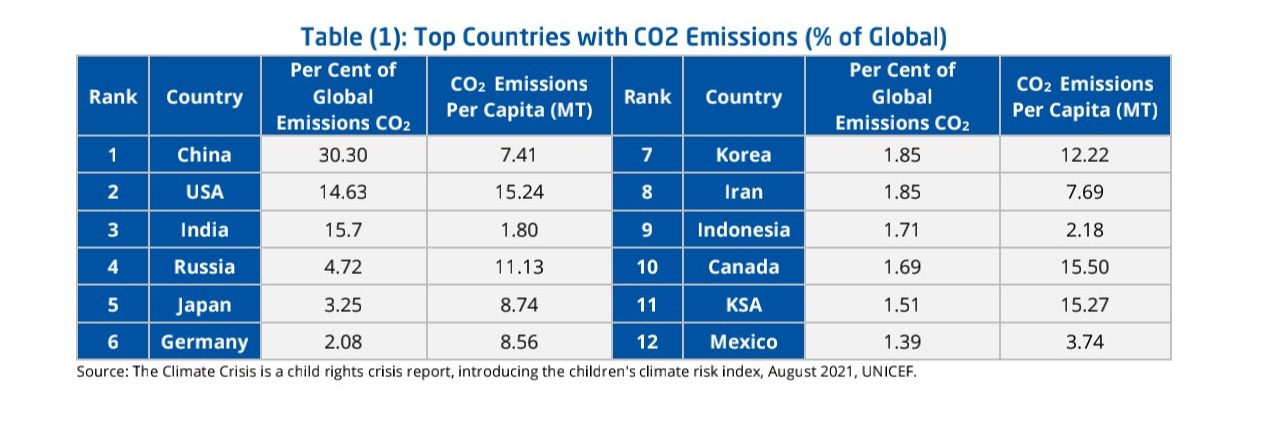
He says, "implementing these measures requires collaborative efforts from the local government, non-governmental organizations, and the international community. Adequate financial resources must be allocated to implement these measures and achieve sustainable food security in Yemen.”
Baqatada adds, "enhancing sustainability, fostering economic resilience, improving infrastructure, and providing essential services can enhance resilience and alleviate the impact of climate change on Yemen's living and economic conditions, in addition to implementing climate change adaptation strategies.”
He proposes eight key measures to respond and adapt to climate change and mitigate the risks posed to Yemen. These measures include “awareness and education, infrastructure improvement, natural resource management, agricultural diversification, enhanced monitoring and planning, government support, international cooperation, and emergency preparedness.”
He says: “Yemen's response to climate change and the protection of food security requires the development of sustainable strategies to adapt to these changes. This includes improving water resource management, promoting sustainable agriculture, utilizing innovative agricultural technologies, fostering biodiversity, and finding solutions to reduce drought and optimize the available resources.”

A recent study revealed that approximately 8 million Yemenis are experiencing severe food insecurity, with 2 million people suffering from malnutrition. It points to water resource scarcity as a major obstruction to the increase of food production rates and agricultural development.
The study, published in December 2020 in the Journal of Agricultural Sciences, emphasizes the importance of diagnosing the food security situation and measuring the food gap in Yemen for the period from 1990 to 2019. It highlights the importance of giving sufficient attention to the food production sector, to keep pace with the food needs of Yemen’s growing population.
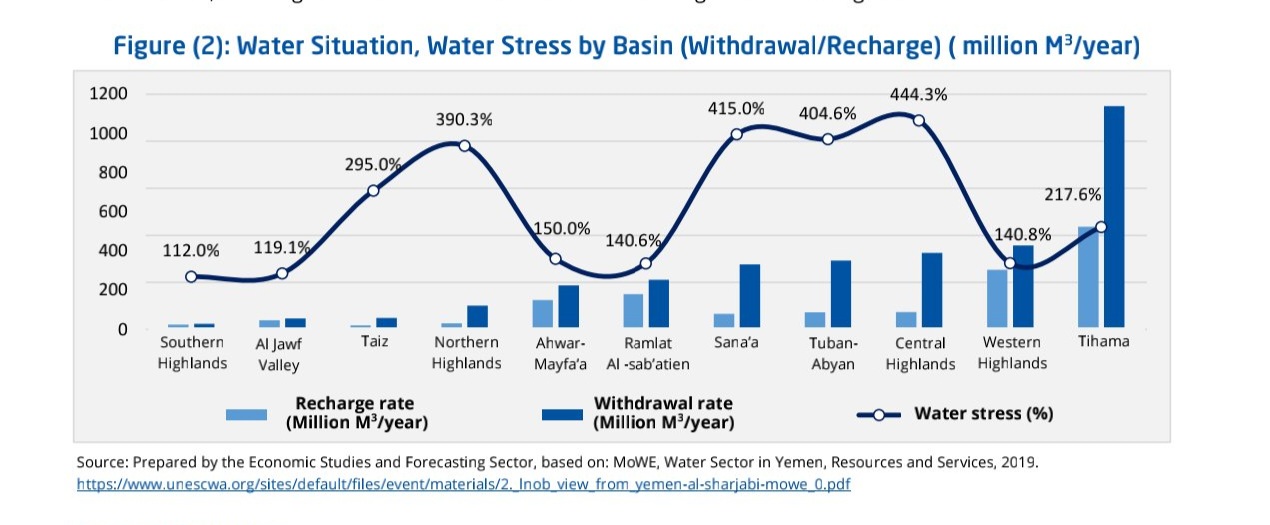
The study affirmed that Yemen has indeed been affected by heat and water scarcity, caused, in part, by the rise in Earth's temperature, which could increase by up to eight degrees Celsius. Such an increase would lead to a 75% reduction in water flow and a potential increase in land aridity ranging from 50% to 60%.
The study's lead researcher, Dr. Adnan Al-Sanawi, a professor of agricultural economics at Sana'a University, affirmed that the agricultural sector in Yemen relies on rainfall for 80% of its production, and the livelihoods of farmers are susceptible to the negative impacts of climate change.
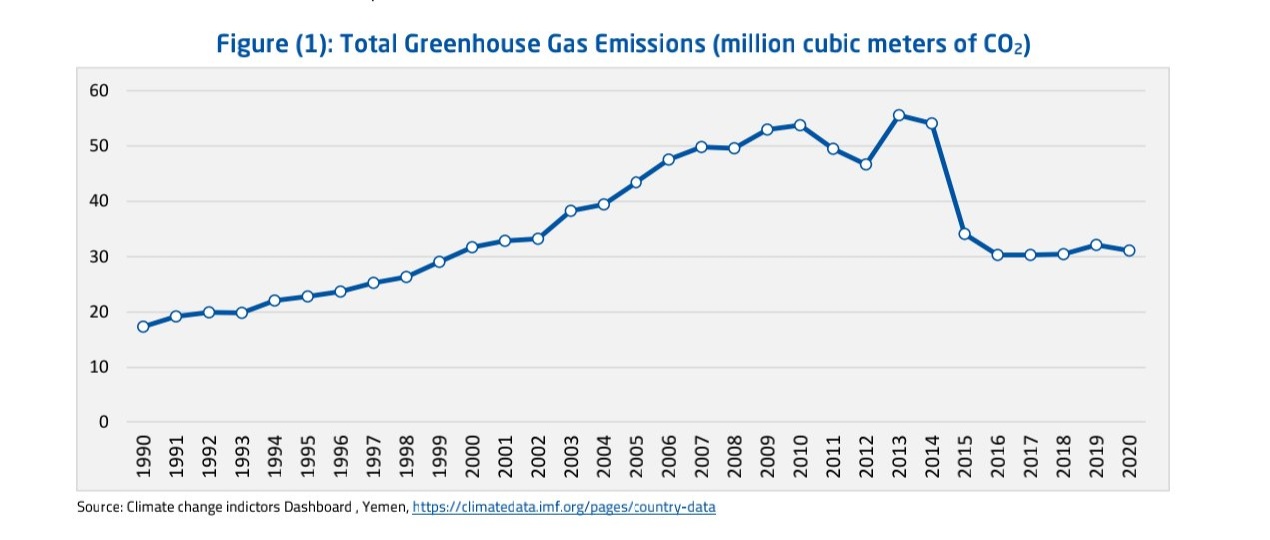
He says, "Yemen is facing its two biggest challenges in recent history: the ongoing conflict between parties, and climate change - all in the complete absence of both governments."
He adds: "Today, we have a historic opportunity to adapt to these changes by adopting dietary patterns that align with Yemeni agricultural products. Given that climate change is a cross-border phenomenon, it is essential that the risk analysis is conducted within the framework of criteria for achieving sustainable development goals."
To mitigate the impacts of climate change on Yemen, Dr. Al-Sanawi suggests increasing vegetation cover and planting more trees. On an individual level, energy consumption should be managed more efficiently. Improved agricultural practices can also contribute to reducing greenhouse gas emissions. The most crucial short-term steps to take involve applying adaptive strategies and implementing smart climate-resilient agriculture.
Al-Sanawi emphasizes the need for governments in Sana'a and Aden to give greater attention to the seriousness of climate change and raise awareness within society. He says they should work on strategies to address the risks and not rely on development strategies formulated in the 1980s.
In the past, the three United Nations agencies, the World Food Programme (WFP), UNICEF, and the Food and Agriculture Organization (FAO), stated that Yemen is suffering from one of the most severe cases of food insecurity worldwide.
According to a statement released in late May, attention is still required for the situation in Yemen. Millions of people are afflicted by hunger, and the situation could worsen if action is not taken to address the root causes of food insecurity.

The Minister of Planning and International Cooperation in the internationally recognized Yemeni government, Dr. Waad Badheeb, stated that one of the primary impacts of climate on food security in Yemen is the recent increase in temperatures and changes in rainfall patterns. Water scarcity has become a major issue affecting agricultural productivity. Severe drought conditions reduce the availability of water for irrigation, making it challenging for farmers to grow crops and maintain livestock. This, in turn, exacerbates food insecurity and contributes to malnutrition.

"Unpredictable and irregular weather patterns, such as storms and floods, have negatively impacted agricultural production in Yemen, leading to crop losses due to soil erosion. This has increased the vulnerability of food security and disrupted traditional planting seasons, making it difficult for farmers to plan and cultivate crops effectively,” Badheeb said.
Badheeb explained that addressing the impacts of climate change on food security in Yemen requires a comprehensive approach, including sustainable water management, flexible agricultural practices, and adaptation strategies. He emphasized that the government has leveraged the global focus on climate project funding and seized available opportunities to secure the necessary financing for climate adaptation and mitigation projects, despite challenges stemming from security conditions that hinder funding acquisition and project implementation.
He added: "There are numerous projects that have successfully collected funding in the areas of food security, water, sanitation, flood damage protection, and the preparation of studies and the mobilization of solar energy projects. These projects are aimed at supporting climate and sustainable development initiatives."
Regarding the solutions and measures that the internationally recognized Yemeni government is supposed to undertake to alleviate the worsening effects of climate change on food security in Yemen, Badheeb responded: “The government has taken several measures to mitigate the worsening effects of climate change on food security through various interventions. These include improving water management, implementing water conservation measures, and investing in water infrastructure, such as rainwater harvesting systems and small-scale irrigation networks. Additionally, efforts have been made to enhance water availability for agriculture, promote water-efficient practices, and educate farmers about sustainable water use. Early warning systems have been established, and investments have been made to improve weather monitoring and forecasting capabilities, with alerts being disseminated to farmers and vulnerable communities.”
A recent study on climate change and its future impacts on Yemen, prepared by Dr. Ali Ahmed Daifallah, a geography professor at Thamar University, underscores the fact that Yemen is facing various environmental challenges. Among the most significant challenges is climate change, which will have a profound impact on the region - especially considering its arid climate and lack of water resources.
The study anticipates an increase in evaporation rates and drought conditions in the region, making it one of the areas most vulnerable to the effects of climate change. These conditions would lead to more frequent drought episodes, reduced agricultural production, and heightened food and water insecurity.
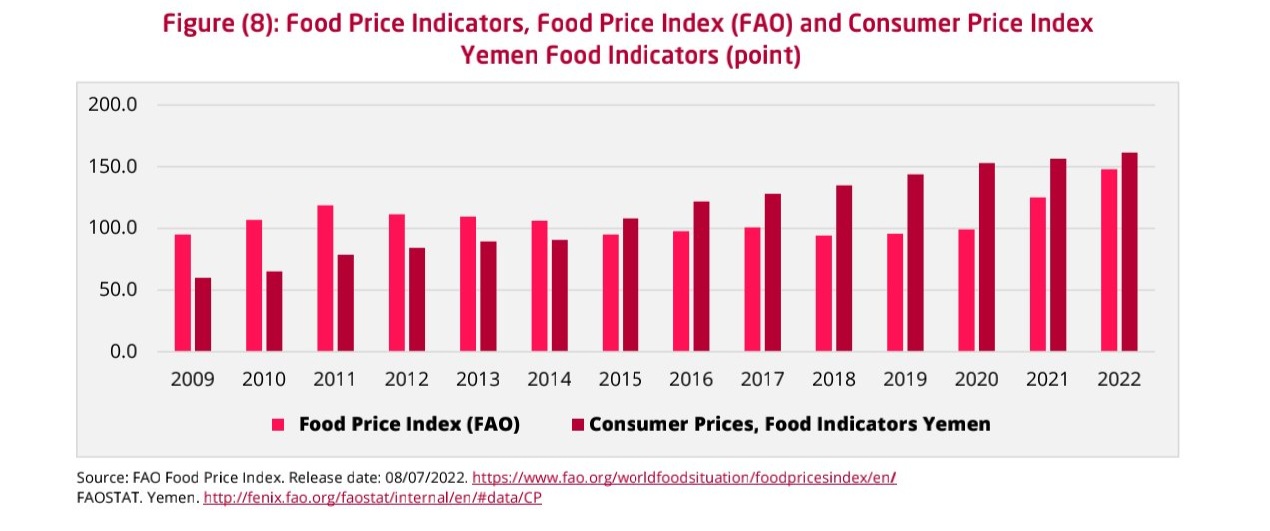
Published in the Rua' Journal of Literature and Humanities in September 2020 by the University of Biskra in Algeria, the study recommends that the relevant Yemeni government authorities make every effort to secure the necessary funding to carry out climate adaptation measures in the country.
Further adding to the country’s food insecurity, Yemen relies on grain imports for 97% of its wheat product needs, which constitute 35% to 46% of individuals’ caloric intake. This information is based on the Economic and Social Updates in Yemen, Issue 74, July 2022.
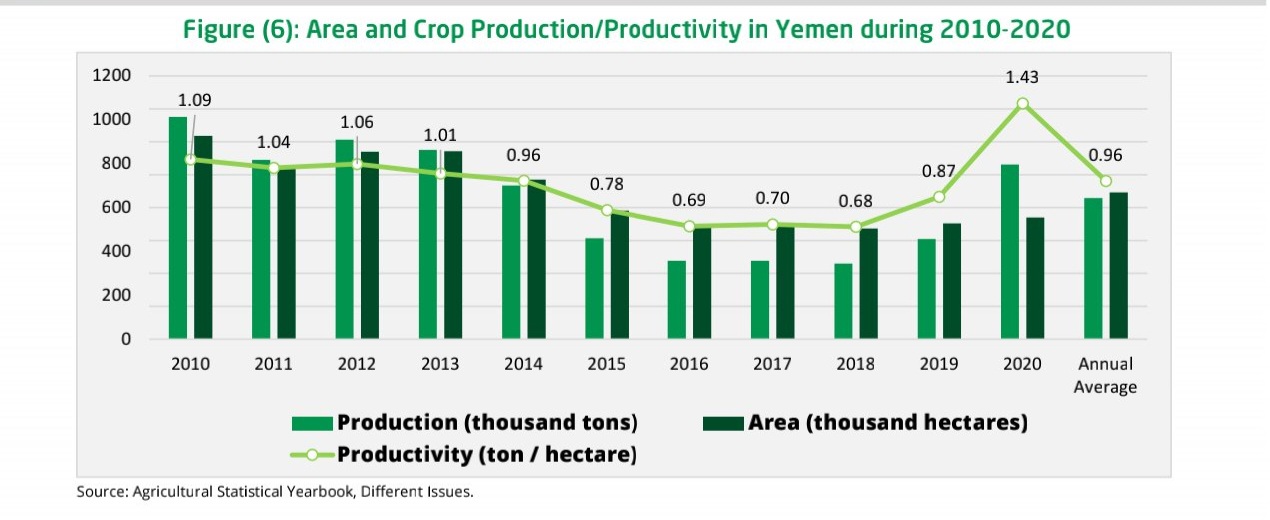
According to the same report, Yemen is among the countries in the region most severely affected by the global repercussions and impacts of climate change, due to its heavily reliance on food imports from other countries for basic sustenance.
Yemen, located in an area highly susceptible to climate shocks, is also recognized by the World Bank as one of the countries most severely impacted by climate change globally. This is in addition to the significant developmental challenges it faces and the recurring incidents of flooding and droughts.
Yemen ranks 30th among the most vulnerable countries and 17th out of the least capable countries in coping with the impacts of climate change. It also ranks 171st out of 182 countries on the Notre Dame Global Adaptation Index, which assesses susceptibility to climate change and readiness for adaptation.
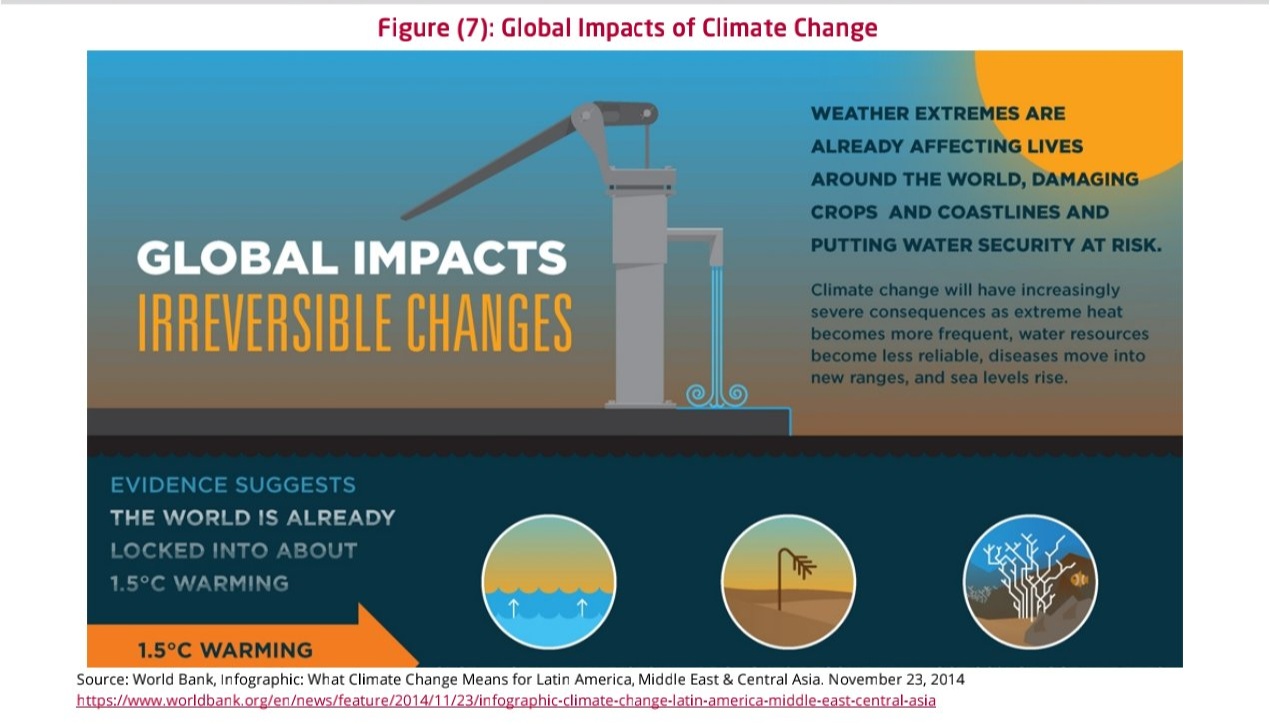
Professor Faisal Baqatada emphasizes that Yemen will face negative consequences if climate change is not addressed. The future could see an exacerbation of environmental, economic, and social problems in the country. Addressing these challenges requires concrete measures to protect water resources, promote sustainable agriculture, and enhance overall environmental sustainability.
Bassam Al-Qadhi
A scientific journalist at the Humanitarian Journalism Foundation (HJF) specialized in covering climate, environment, and health issues.
This investigation was reviewed in English by the South24 Center and published in coordination with the Humanitarian Journalism Foundation.

قبل 3 أشهر

قبل 3 أشهر